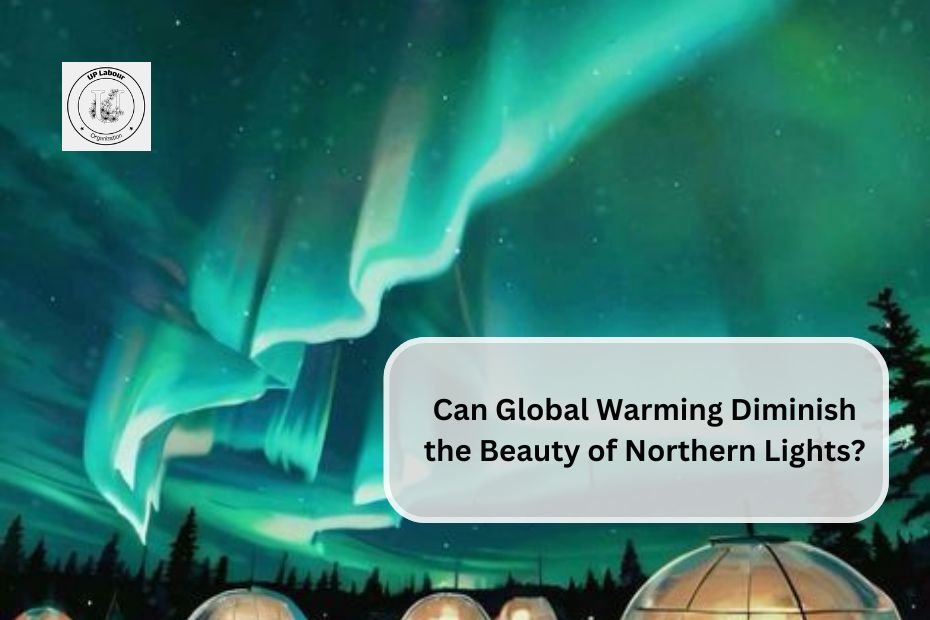Global warming is a significant concern for the planet, and its effects extend beyond rising temperatures and changing weather patterns. One intriguing question is whether global warming could diminish the beauty of the Northern Lights, also known as the aurora borealis. This natural phenomenon captivates millions with its vibrant colors and mesmerizing displays. Understanding the relationship between climate change and the Northern Lights requires examining several factors, including solar activity, atmospheric conditions, and light pollution.
The Nature of the Northern Lights
The Northern Lights occur when charged particles from the sun collide with gases in Earth’s atmosphere, producing stunning displays of light. This interaction primarily happens in the polar regions due to Earth’s magnetic field, which channels these particles toward the poles. The colors visible during an auroral display depend on the type of gas involved and the altitude at which these collisions occur. For instance, oxygen at higher altitudes can produce red and green hues, while nitrogen can create blue and purple shades.
The Impact of Climate Change
Solar Activity vs. Climate Change
While climate change does not directly affect the mechanics of how Northern Lights form, it can influence their visibility. Solar activity, particularly sunspot cycles, plays a crucial role in determining the intensity and frequency of auroras. Sunspots are linked to solar flares and coronal mass ejections, which increase the number of charged particles emitted toward Earth. As we approach a peak in the current solar cycle around July 2025, experts predict an increase in sunspot activity, potentially leading to more frequent auroras.However, climate change can complicate this picture. As global temperatures rise due to human-induced greenhouse gas emissions, weather patterns become more unpredictable. Increased storm intensity and changes in precipitation patterns may lead to more cloud cover in regions where auroras are typically visible. Dr. Helgi Rafn Hróðmarsson notes that while long-term climate change will not alter the fundamental processes behind the Northern Lights, it may lead to increased cloudiness that obstructs visibility.
Cloud Cover and Visibility
One of the most direct ways global warming could diminish the beauty of the Northern Lights is through increased cloud cover. As temperatures rise, storms may become more frequent and intense, leading to greater precipitation and cloud formation. This cloud cover can obstruct views of auroras, making it challenging for observers to witness these spectacular displays.Forecasting tools that track cloud cover are essential for those hoping to catch a glimpse of the Northern Lights. By monitoring weather conditions closely, enthusiasts can improve their chances of seeing this natural wonder even as climate change introduces variability into weather patterns.
Light Pollution: An Increasing Challenge
In addition to climate change’s impact on weather patterns, light pollution poses another significant challenge for viewing the Northern Lights. Urban areas with excessive artificial lighting create a phenomenon known as skyglow, which brightens the night sky and obscures celestial objects. This interference can diminish the brilliance of auroras, making them harder to see even during optimal geomagnetic conditions.The effects of light pollution are particularly pronounced in cities located near auroral zones. Even if solar activity is high and conditions are favorable for viewing Northern Lights, urban dwellers may find their experiences diminished by surrounding artificial light sources.
The Future of Northern Lights Viewing
As we look ahead, understanding how global warming and light pollution may affect Northern Lights viewing is crucial for enthusiasts and researchers alike. While solar activity will continue to play a significant role in determining when auroras are visible, climate change could introduce new challenges related to weather variability and cloud cover.
Mitigation Strategies
To enhance opportunities for viewing Northern Lights despite these challenges, several strategies can be employed:
- Seek Dark-Sky Locations: Traveling to remote areas with minimal light pollution offers a better chance of witnessing auroras.
- Monitor Solar Activity: Keeping track of solar cycles can help predict periods when auroras are likely to be more active.
- Utilize Weather Forecasts: Regularly checking weather conditions can help identify clear nights suitable for viewing.
Conclusion
In conclusion, while global warming does not directly impact the formation of Northern Lights, its effects on atmospheric conditions could diminish their visibility through increased cloud cover. Additionally, light pollution remains a significant barrier for many observers hoping to experience this natural wonder. By understanding these factors and employing strategies to mitigate their impact, enthusiasts can continue to enjoy one of nature’s most breathtaking displays even amid changing climatic conditions. The future of Northern Lights viewing may depend on our ability to adapt to these challenges while preserving our connection with this awe-inspiring phenomenon.

